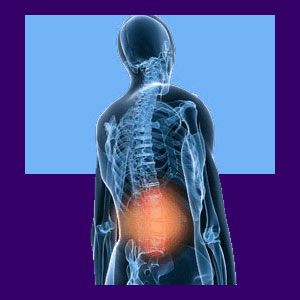
Spinal stenosis treatment generally begins as a conservative process, but often escalates into far more dramatic and invasive therapy choices. The care methods selected will depend on the severity of the condition and the symptoms it is producing. It is crucial to fully understand the potential risks and benefits of all treatment options before making a decision on the best therapy for your condition.
This article will detail the difference between the limited expectations of conservative care versus the potential curative ability of surgical interventions. We will also explore some of the reasons why treatments may fail to provide positive results for many diagnosed patients.
Conservative Spinal Stenosis Treatment
Conservative treatments for spinal stenosis should always be exhausted before pursuing any surgical option. Conservative therapy modalities will not typically resolve the structural changes associated with stenosis, but might minimize or alleviate the symptoms experienced. The most common forms of non-invasive or mildly invasive treatments usually include the following:
Pain management drugs are the industry standard and may help reduce pain and nerve expressions. These powerful drugs seem like an easy fix, but actually are a very risky proposition when used long-term.
Epidural injections are simply more drugs placed in a hypodermic needle. I do not see the point of epidurals for stenosis, except in cases where surgery must be put off for some reason. Nerve blocks may help control some pain, but will not likely do anything to resolve neurological effects.
Physical therapy is often recommended to strengthen the back muscles to support the spine. To what end? The problem exists inside the spinal canal. There are no stability issues commonly expressed. Regardless, PT does help provide some degree of symptom relief for select patients.
Chiropractic may be effective for treating some disc issues which enact stenotic changes. It is far less effective for arthritic conditions, but may still offer symptom reduction for many patients, either through true efficacy or placebo effect.
Most of these treatments will do nothing to solve the spinal stenosis problem, but will hopefully make the condition more livable.
It is interesting that physical therapy is included, since that supports the theory of oxygen deprivation being the main reason for the pain, rather than spinal stenosis. You can read more about this topic on our spinal stenosis exercises page.
Spinal Stenosis Surgery
If conservative treatments do not provide adequate relief, or if the patient is simply tired of ongoing symptom-based care, back surgery will be often be considered. In emergency cases, such as cauda equina syndrome, surgery might be the first and only option given.
Surgery is usually reserved for serious cases of stenosis which have been verified as being the true symptomatic source. It is especially useful at resolving the neurological and functional issues associated with extreme stenotic change, such as the inability to stand or walk and the occasional expressions of incontinence.
The usual surgical procedure for the correction of spinal stenosis is a laminectomy. It is a procedure designed to increase the size of the spinal canal. Results are not always good and sometimes the patient is actually worse off after surgery. Obviously, surgery should only be considered as a very last resort.
Spinal Stenosis Treatment Recommendations
Medical stenosis treatments do not demonstrate very promising statistics for complete resolution of all symptoms. Conservative treatments must be used indefinitely and surgery achieves mixed results, sometimes doing more harm than good. One of the major reasons why this occurs is simple misdiagnosis of minor cases of stenotic alteration as the underlying cause of pain. Many of these patients never received proper correlation of their symptoms from a qualified neurologist and trusted their care to an over-enthusiastic orthopedic surgeon exclusively. It should be no shock that spinal stenosis treatment will fail if not targeting the real cause of pain.
Remember that the physical expressions of stenosis do not inherently cause pain. In many cases, the stenosis simply takes the blame while some other physical or psychological syndrome is actually the source of suffering. The rule states that if no definitive nerve or cord compression is occurring, then they may be another underlying process for pain with the stenotic change being coincidental.




